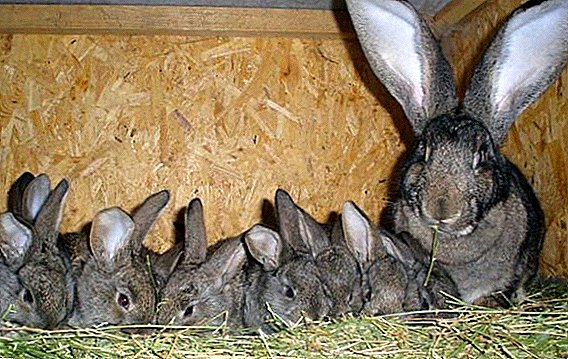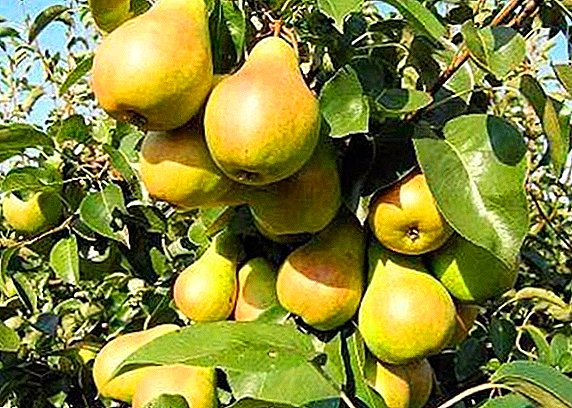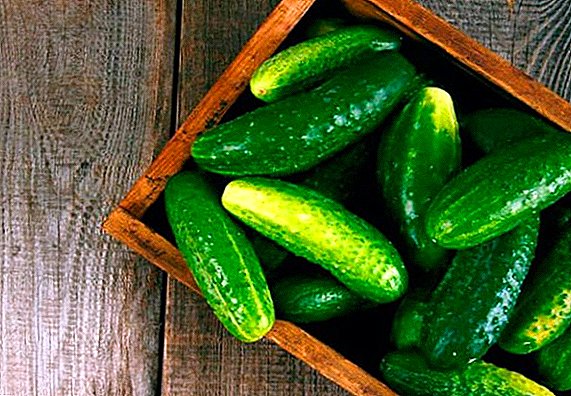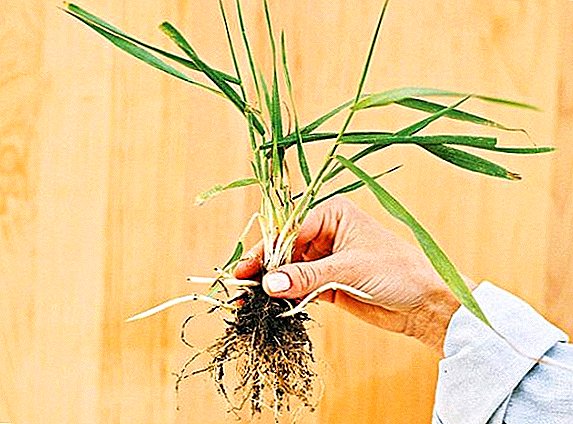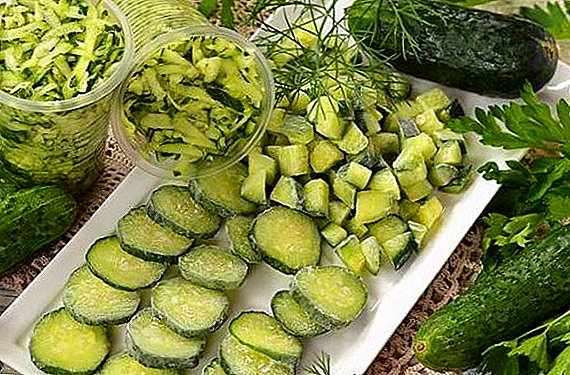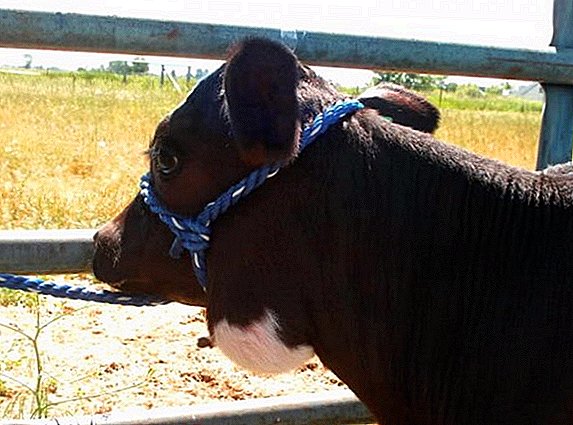 Anyone who breeds livestock, it is useful to know how to help the cow, if she was struck by actinomycosis. The article describes how to recognize the disease, how to treat it, and whether it is possible to save cattle from it.
Anyone who breeds livestock, it is useful to know how to help the cow, if she was struck by actinomycosis. The article describes how to recognize the disease, how to treat it, and whether it is possible to save cattle from it.
What is this disease
Actinomycosis is a chronic disease of an infectious nature that affects not only cattle, but also a person. It is caused by a fungus; characterized by the appearance on the internal organs and tissues of inflammation in the form of granulomas, turning into abscesses and fistulas.
Did you know? The most expensive beef in the world is obtained from Japanese Wagyu cows. The Japanese, living in the vicinity of the city of Kobe, where these cows were mostly divorced, treated their pets with care - they fed them with the best herbs, wiped them with sake and drank beer. As a result, they have learned how to get very tender and tasty meat, which today is sold at 100 euros for 200 grams of tenderloin.The disease is dangerous for the animal, because if it is not treated promptly, there may be serious complications affecting the kidneys, liver, respiratory system and brain. With poor health, a cow may be fatal. The most susceptible to damage the fungus are cows under the age of 1-1.5 years.

Pathogen, sources and routes of infection
The causative agent of actinomycosis was identified in the XIX century. At that time, it was determined that the disease develops under the action of the fungus Actinomyces bovis. The parasite enters the body of the cow through wounds on the mucous membranes and on the body, upper respiratory tract, lower intestine, nipples.
Find out why it is important to trim cows with hoofs.
Most often, an infection occurs when the animal eats grass infected with fungus. He usually settles on cereal. The main condition for infection is the presence of a wound through which the pathogen enters the body.
Sources of infection can be:
- feed;
- water;
- objects of the external environment.
Most often, the disease develops in the winter-autumn period - a time of reduced immunity, feeding with roughage and eating stubble, which injures the oral mucosa.
When ingested, the fungus causes an inflammatory process, which results in the formation of actinomycous granuloma with the release of pus. The lower jaws, bones and lymph nodes are affected first. As the lesion develops, it passes to the vital internal organs, as a result of which the meat of the animal becomes unfit for food.  The pathogen can live in the environment from 1 to 6 years. Destroyed by chemical and physical effects:
The pathogen can live in the environment from 1 to 6 years. Destroyed by chemical and physical effects:
- formalin solution (3%);
- heating to a temperature of 75-85 ° C;
- steam treatment.
Read more about what diseases can hurt cows and how to treat them.
Actinomyces bovis is sensitive to antibiotics such as tetracycline, erythromycin, chloramphenicol and other drugs that have fungicidal action.
Symptoms
After the fungus enters the body before the first symptoms occur, it can take several weeks or even a year - the incubation period is so long.
The manifestation of the disease will depend on:
- localization sites;
- degree of pathogenicity of the pathogen;
- the ability of the animal organism to resist it.

A common symptom for all animals is the formation of actinomycmas: a slowly growing and spreading dense tumor. Actinomycous lesion may be located on the head, neck, mandible, udder, tongue and oral mucosa. Perhaps its development in the lymph nodes.
If only soft tissue is infected, the cow is most often cured and she quickly recovers. With the defeat of the joints, bones, internal organs most often the prognosis for an animal is unfavorable.
With the defeat of the skin of the head, neck, lower jaw
In these areas, the disease manifests itself in the form of the appearance of dense tumors, fused with the skin, which eventually opened, and from them come purulent discharge of yellow color, sometimes mixed with blood.
In them with the naked eye you can see grains of gray - this is the fungus of the pathogen. Ulcers can be opened both outside and into the larynx. They are then drawn out, then reopened.
Did you know? Cows subtly feel the Earth’s magnetic field. They also have a developed sense of time. When the milking mode is observed, they form a conditioned reflex to produce milk at a certain time. Therefore, if you are late with milking at least 30-40 minutes, the volume of milk will be already 5% less, and fat content will decrease by 0.2-0.4%.Upon careful examination of the wound, it will resemble cauliflower in appearance. If the jaw is affected, the animal has a change in the shape of the head.

With the defeat of the lymph nodes
An encapsulated purulent accumulation forms in the lymph nodes when the fungus-causative agent enters them. Sometimes there is a decrease in actinomycous tumors, and it seems that the animal has recovered. However, after some time, with a decrease in immunity, tumors may return to the same areas where they were located before.
After opening the abscess in a cow, fever, puffiness and poor health are possible. Remission can occur if there is no fistula on the site of the affected lymph node. In this case, the tumor can go for an indefinite period.
Breeding cattle is associated with a risk of developing diseases such as ketosis, cysticercosis, leukemia, mastitis, udder edema, pasteurellosis, foot and mouth disease, or hoof disease.
With udder damage
On the udder dies tissue. Actinomycomas form in the mammary gland tissues, reaching several centimeters across and provoking the appearance of ulcers and fistulas.
If you feel the udder, you will feel a large seal with many small formations. After the actinomycoma has matured, a large wound with purulent contents appears in its place. After treatment, a scar remains on the udder. 
With the defeat of the tongue and mucous
When localized by actinomyc in the larynx and pharynx, it becomes difficult for the cow to swallow and chew, as a result her appetite decreases and she loses weight sharply.
If the tongue, gums, or mucous membrane of the mouth are affected, then ulcers can be seen from which a yellow-red fluid oozes out. Teeth begin to stagger and fall out. There is increased salivation.
When the pathogen enters the alveoli of the teeth, the infection develops rapidly in the body. If the infection began with the tongue, it will increase in size. In this case, the cow can not tightly close the jaw, and the tongue falls out.
Important! When you find the first symptoms, you should immediately seek help from a veterinarian for the correct diagnosis and the appointment of a competent treatment. Delay with therapy is fraught with sad consequences for the animal.
Diagnostics
The diagnosis of "actinomycosis" occurs on the basis of examination of the animal, palpation of the site affected by the pathogen, and analysis of tissues with actinomycosis. In order to produce cytology, purulent contents are collected.  If the fungus Actinomyces bovis is detected in it, then the preliminary diagnosis was made correctly. When a neoplasm of unknown origin is detected in a cow, a histological examination is performed.
If the fungus Actinomyces bovis is detected in it, then the preliminary diagnosis was made correctly. When a neoplasm of unknown origin is detected in a cow, a histological examination is performed.
How to treat actinomycosis in cows
Actinomycosis therapy involves different treatment regimens. However, in each of them there is a mandatory treatment of wounds with iodine, its intravenous injection, as well as injections of antibiotics. It is also possible surgery, in which the tumor is removed, the abscess is cleaned and treated with antiseptics. But the operation is preceded by antibiotic therapy.
Familiarize yourself with the description and peculiarities of the maintenance of such breeds as Simmental, Belgian Blue, Dutch, Holstein, Ayrshire, Jersey, Aberdeen Angus, Black-and-White, Red Steppe, Kalmyk, Kakhakh, Highland, Yaroslavl, Brown Latvian, Shorthorn, and the rest of the costumes, and the rest of the costumes, the costumes and the numbers, the numbers, the numbers, the numbers, the numbers, the numbers, the numbers, the numbers, the numbers, the numbers, the numbers, the numbers, the numbers, the numbers, the numbers, the numbers, the numbers, the numbers, the numbers, the numbers, the numbers, the numbers, the numbers, the numbers, the numbers, the numbers, the numbers, the numbers, the numbers, the numbers, the numbers, the numbers, the numbers, the numbers, the numbers, the numbers will be 100.
A solution of iodine and potassium iodide
If the pathogen only penetrated under the skin, sometimes only a subcutaneous injection of iodine and potassium iodide, the drug "Iodinol", is enough. Substances injected around actinomycosis. In more advanced cases - or when it is not possible to get close to actinomycosis - iodine solution is injected intravenously.
Injection solution is prepared from:
- crystalline iodine - 1 g;
- potassium iodide - 2 g;
- warm water - 0.5 l.

The solution is prepared exactly in this order, as are the ingredients in the list. The analogue can be a mixture of 4 ml of an alcoholic solution of iodine (5%) and 900 ml of distilled water. A vein is injected in 100 ml each day.
The course of treatment is 4-5 days. Usually during this time actinomycomas dissolve. Also, iodine and potassium iodide can be administered using a dropper.
Antibiotics
In severe cases, antibiotic therapy is prescribed. It can also be prescribed in conjunction with iodine injections. Commonly used antibiotics such as oxytetracycline, polymyxin. They are injected into actinomycomy. The course of treatment with oxytetracycline is 7 days.
Animals up to one year are administered 200 thousand U, older animals - 400 thousand Un. Polymyxin is injected every 10th day. In advanced cases, benzylpenicillin is injected into the cows. However, it is important to establish in advance that the animal is not allergic to penicillin.
Full recovery after treatment should be expected after 3-5 weeks. It is important to follow all veterinarian regulations and complete the course of treatment, even if the symptoms of the disease have gone. Recurrences are characteristic of actinomycosis.  In addition to drug treatment, efforts are also directed at improving the immunity of the animal - the introduction of vitamin supplements, enhanced nutrition.
In addition to drug treatment, efforts are also directed at improving the immunity of the animal - the introduction of vitamin supplements, enhanced nutrition.
Important! When actinomycosis is found in the herd, the room where the livestock lives should be immediately disinfected. For disinfection apply solutions of caustic alkali (2-3%), freshly sour lime (2-3%), formalin (3%).
Preventive measures
To avoid infection with Actinomyces bovis, you should follow certain preventive measures:
- steam up roughage (straw, hay) before feeding to soften them, so the animal will not be able to damage the oral mucosa;
- comply with recommendations for nutritional management, so that the animal has good immunity;
- not to neglect the sanitary and hygienic rules for keeping cows, including regular cleaning and disinfection of the barn;
- periodically inspect the herd and timely isolate sick animals;
- abandon grazing on pastures that are located in lowlands, swampy and damp;
- timely handle scratches, abrasions on the skin and mucous membranes, remove aching teeth.
 Thus, actinomycosis is a serious infectious disease that must be treated on time and without fail. Delay in treatment threatens with serious violations in the work of vital organs - as a result, beef becomes unusable.
Thus, actinomycosis is a serious infectious disease that must be treated on time and without fail. Delay in treatment threatens with serious violations in the work of vital organs - as a result, beef becomes unusable.In order to prevent contamination of the herd with actinomycosis, it is necessary to ensure periodic disinfection of the barn, high-quality nutrition and careful care of animals.




